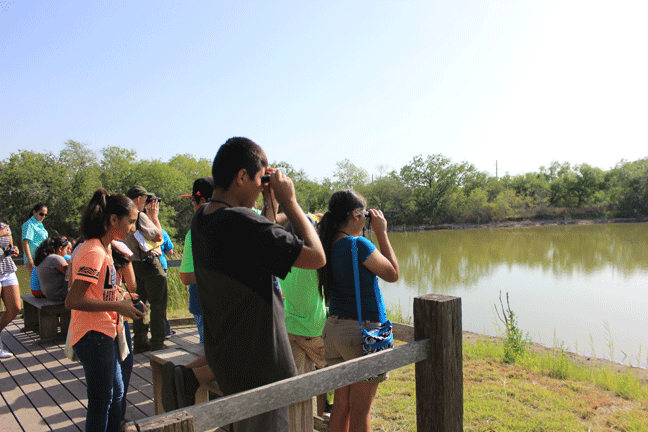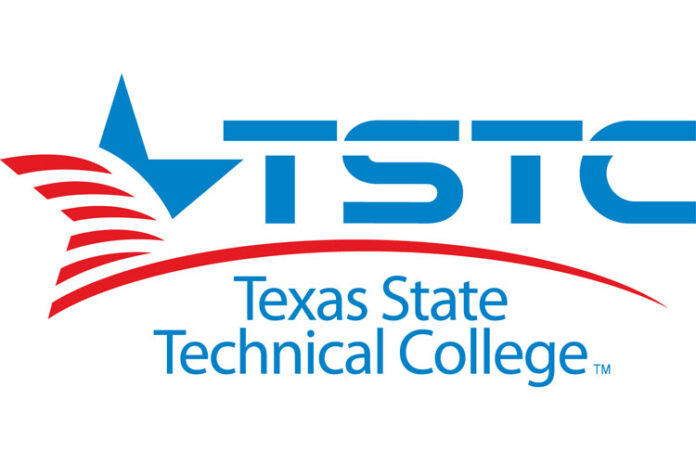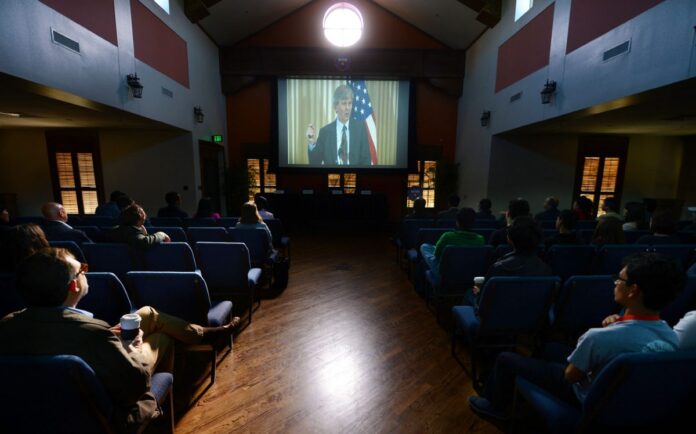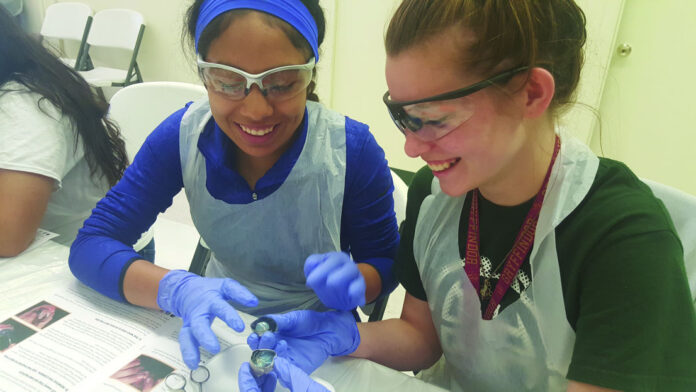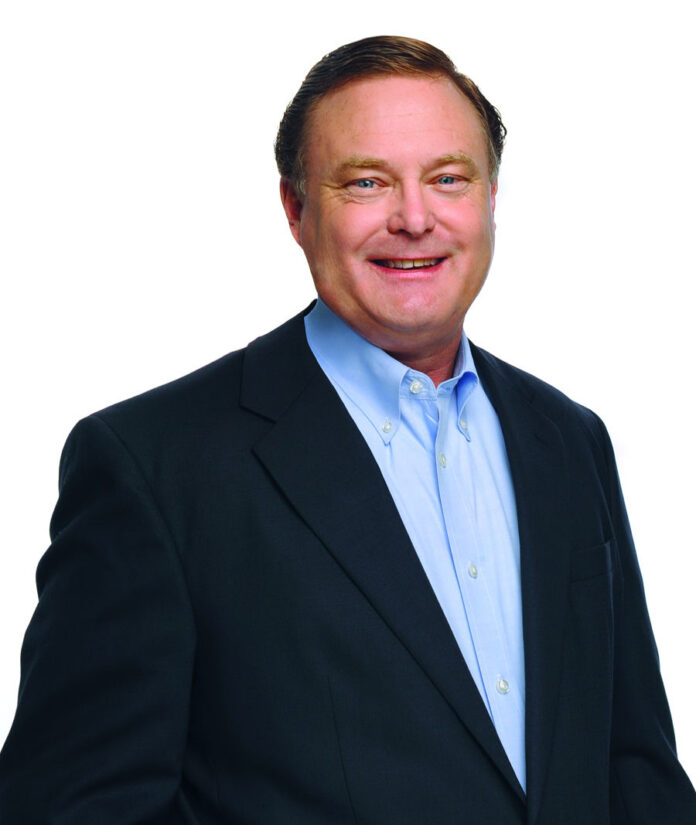BROWNSVILLE – With a little help from UTRGV, scientists have detected gravitational waves, ripples through the fabric of spacetime, experimentally verifying Albert Einstein’s last prediction of general relativity made a century ago.
Months of social media rumors were confirmed during a Thursday news conference, introducing a new way to observe the universe.
University of Texas Rio Grande Valley physicists, some who’ve worked decades on the project, are among more than 1,000 international collaborators with the Laser Interferometer Gravitational-wave Observatory (LIGO). The Brownsville-based research center has been home to more than 20 authors of a paper published Feb. 11 by the peer-reviewed Physical Review Letters.
“It takes a lot of people to do this,“ said Gabriela González, spokeswoman for the LIGO scientific collaboration, during the news conference.
Last September, LIGO completed an upgrade to its pair of gravitational-wave detectors located near Livingston, Louisiana, and Hanford, Washington. On Sept. 14, both facilities recorded nearly simultaneous, historic readings.
“What was amazing about this signal is that it was exactly what you’d expect that Einstein’s Theory of General Relativity would predict. (There) were two … massive objects, like black holes, inspiraling and merging together,“ said David Reitze, executive director of LIGO Laboratory.
LIGO scientists documented the reverberations from the first confirmed binary black holes, two black holes caught in each other’s orbit. The pair of about 150-kilometer-wide black holes, each with masses about 30 times the sun, accelerated to half the speed of light 1.3 billion years ago. They spiraled into each other, bending time and space, ultimately colliding to form a larger black hole.
“That’s what we saw here,“ Reitze said. “It’s mind-boggling.“
General relativity hypothesizes accelerating masses should distort spacetime, sending gravitational waves through the universe at the speed of light.
Each detector contains state-of-the-art laser systems built specifically to observe gravitational wave length fluctuations the diameter of an atom, and are “most precise measuring device(s) ever built,“ according to Reitze.
“You can’t buy low-noise, high-power devices,“ said Volker Quetschke, UTRGV assistant professor of physics, adding LIGO was defining state-of-the-art in the field.
Lasers stable enough for the dual four-kilometer arms of the interferometer didn’t exist when the project began, said Quetschke, who has worked on gravitational-wave sensing hardware since 2000. Development of LIGO technologies were research projects for professors and students, Quetschke said.
“The universities basically take the development role of the project. It is not a turn-key project. You don’t go to RadioShack and say, ’I want a $1,000,000,000 gravitational wave detector. There are a lot of small aspects.“
UTRGV’s Brownsville campus streamed the announcement live, and the event was followed by comments from current and past university officials, as well as physicists involved in the research.
Havidán Rodriguez, UTRGV provost and vice president of academic affairs, congratulated faculty and student researchers who contributed to the achievement, and Parwinder Grewal, UTRGV College of Sciences dean, emphasized the rarity of the moment.
“Discoveries of this magnitude don’t happen every day,“ Grewal said. “This is an exciting time for humanity, for science (and) scientists.“
Grewal highlighted the collaborative nature of the project and the competitive funding record of the physics faculty, calling it comparable to any institution in the nation.
“On average, the dollars that our faculty has received over the last five years is over $500,000 per faculty member,“ Grewal said. “This is impressive. I come from Ohio State University. It is the same, so I’d say we’re already a research institution,“ referring to the physics department.
Mario Diaz, director of the Center for Gravitational Wave Astronomy, was in Washington, D.C., for the news conference and echoed Grewal’s sentiment, calling the department one of the most competitive in Texas based on research and publication.
The center was made possible by a NASA grant in 2003, and has since brought research in cutting-edge technologies to the Valley, according to Diaz.
“I thought it was important to develop something more applied. That’s the way we constructed the optics lab and we opened a line of research into lasers, optics (and) photonics — that is precisely the technology being used at LIGO.“
While the discovery will likely contribute to a Nobel Prize, Diaz said the university’s investment in this research has already been rewarded.
“In 2006, we hired a new faculty member to come into our center who is a radio astronomer,“ said Diaz, referring to Fredrick Jenet. “This same faculty member is the same one that led an initiative that attracted SpaceX to the Valley … because he’s going to be developing radio tracking systems for SpaceX spacecraft.
“I think this is a good example of things that are unforeseeable, but are based in the knowledge that you generate and develop.“


